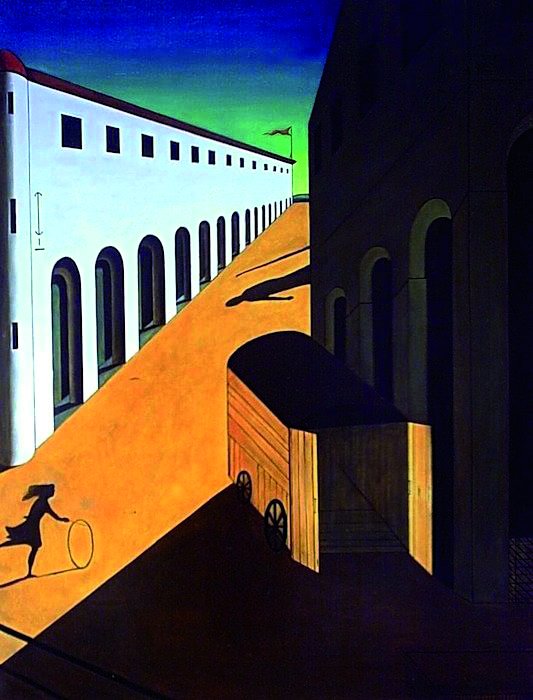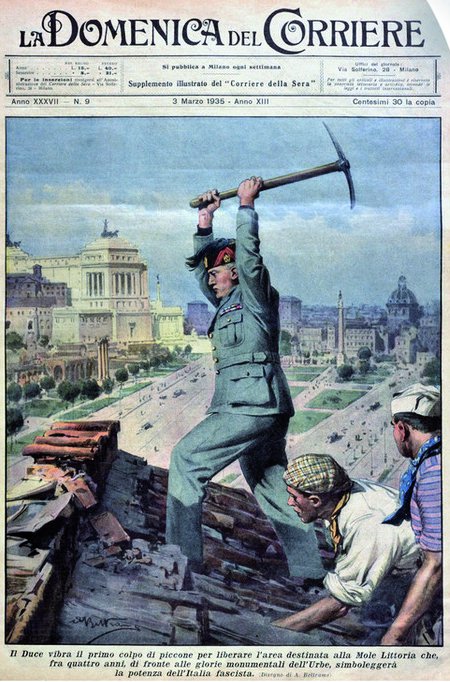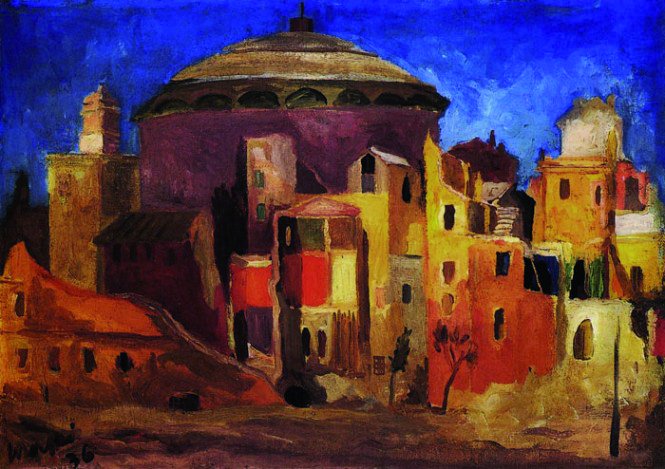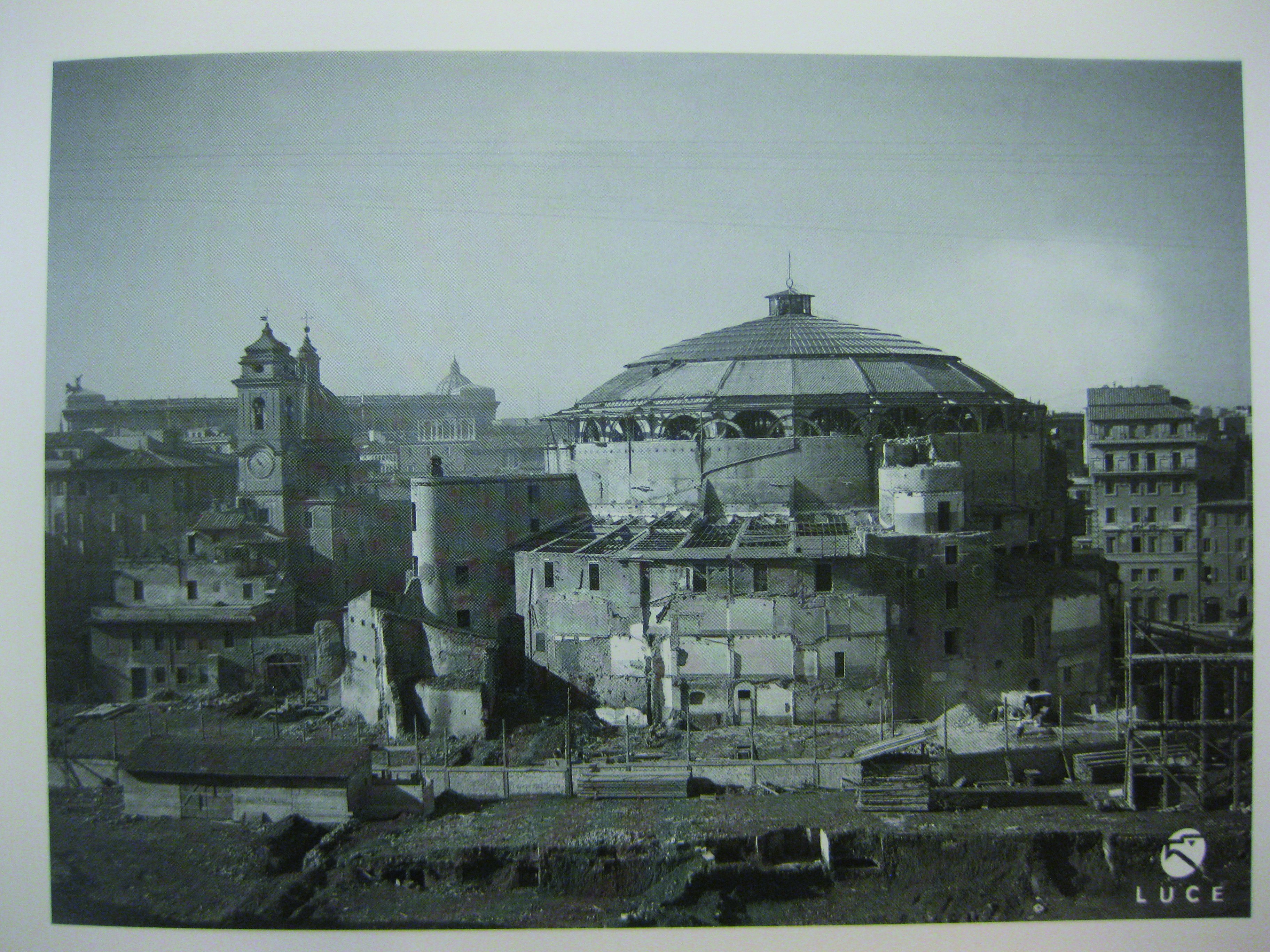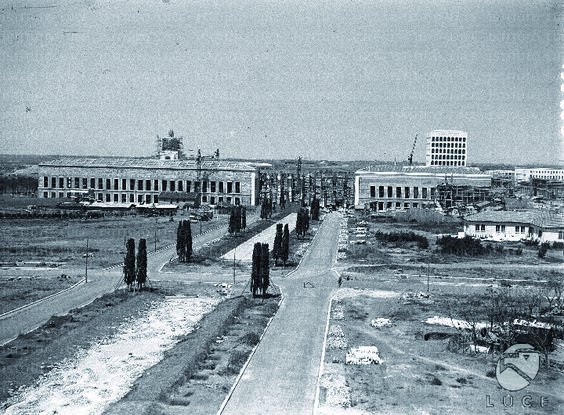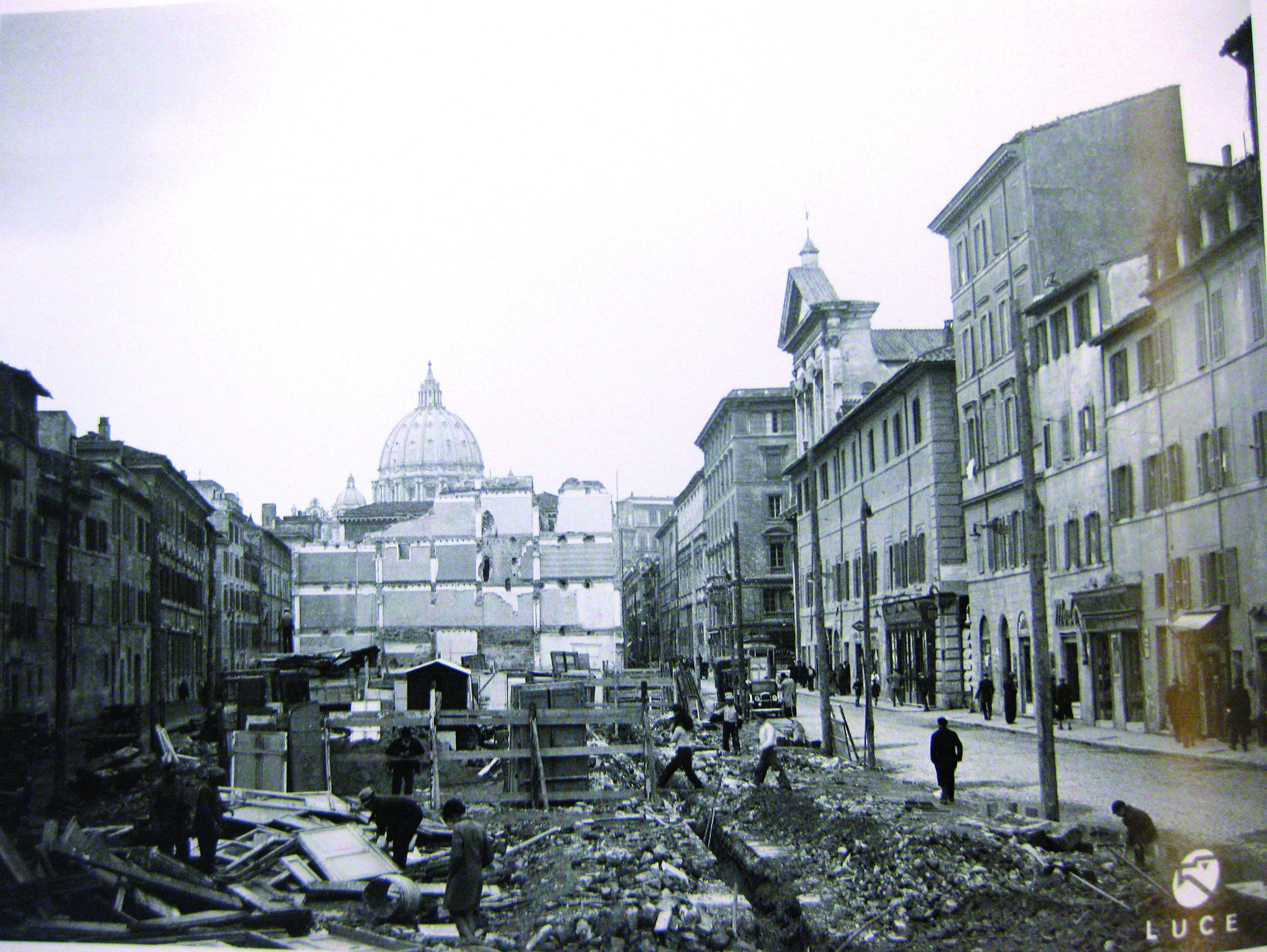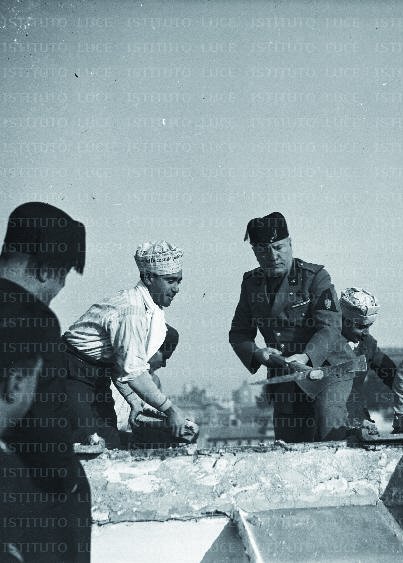The renovation of the city aimed at making its aspect monumental, with the construction of public buildings celebrating the so called fascist revolution. Explained as building and social reconditioning, entire internal areas of the historic city were ravaged (especially the medieval area).
The Campidoglio hill was isolated demolishing the constructions around it and at its foot up until Ostiense area where via del Mare was created. On the other slope of the hill, in order to link the Colosseum with Piazza Venezia, Via dell’Impero was opened, exposing part of the ruins from the Imperial Fora and creating a street for parades. Particular significance was given to the reconfiguration of the Ara Pacis and to the isolation of Mausoleum of Augustus, by demolishing the auditorium renowned in Europe for its perfect acoustics (it is important to notice that the delegates of the congress of the National Fascist Party had been besieged for several days by the Roman anti-fascists in 1921). Works of demolition and rebuilding (mainly left unfinished) were also undertaken in the areas near Corso Rinascimento and Piazza Navona. Via della Conciliazione and the new Termini train station were completed after the Second World War.
A demanding construction project was the setting up of the area at the bottom of Monte Mario and Tiber river, from the Tiber embankment named Lungotevere delle Armi to Farnesina, presenting at its centre a series of sports facilities dedicated to the celebration of the Giovinezza (youth) of the regime in Mussolini’s Forum. However the key fascist urban project was meant to be the E42 or EUR, which is to say the district dedicated to the universal exhibition for the twenty year anniversary of the march on Rome planned for 1942; project in small part realised and suspended because of the war. After the war the area became EUR, actualised thanks to Virgilio Testa’s obstinacy.
